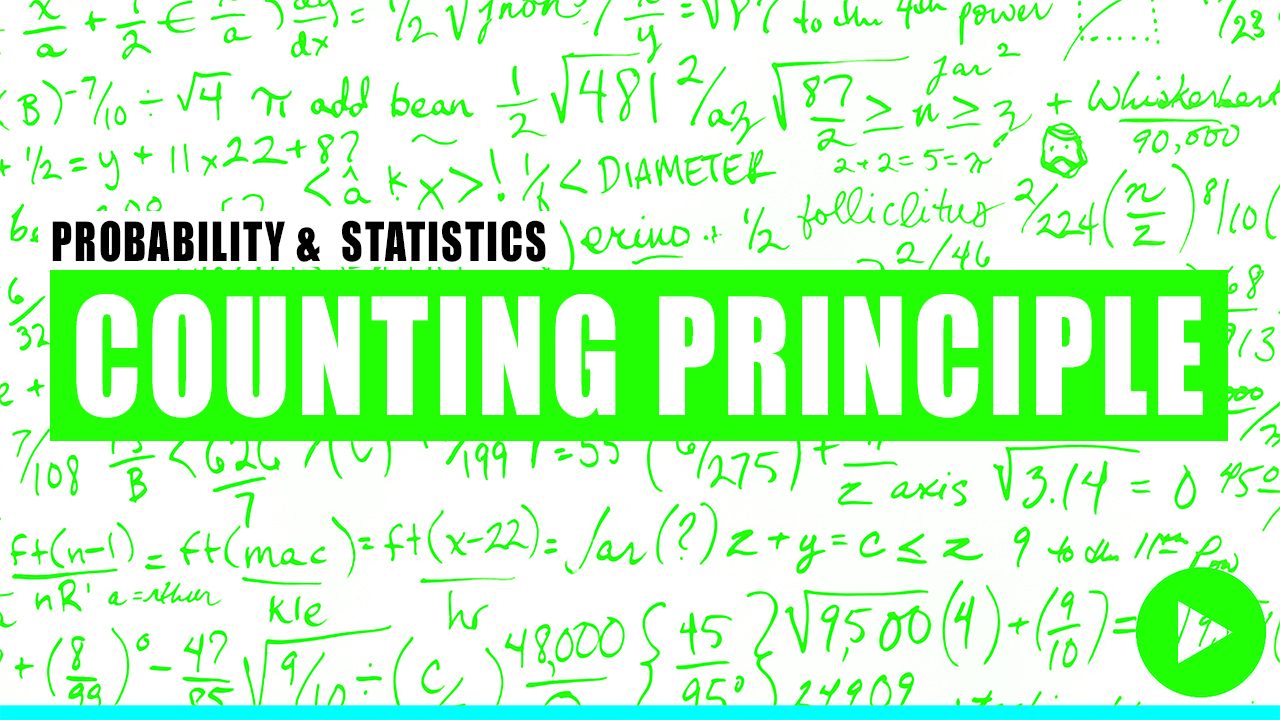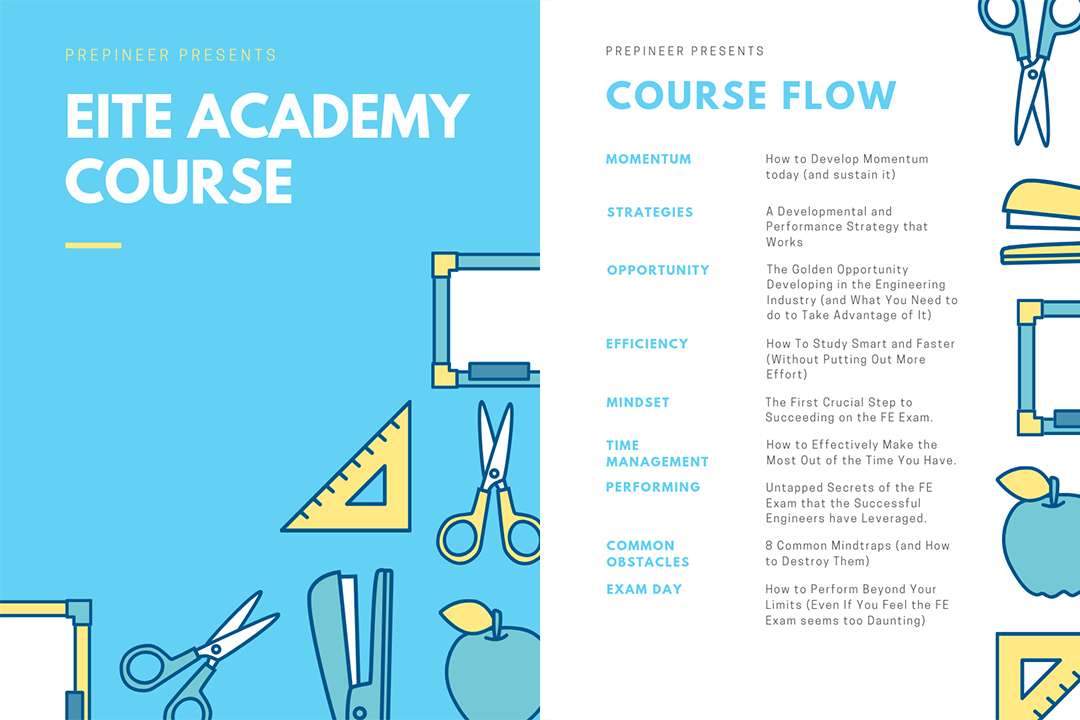In this episode of Engineer In Training Exam TV, Justin walks you through a Fundamentals of Engineering Exam Review of Counting Principle.
He will begin by defining the Counting Principle and then run through an example in how we can use the counting principle in the probability and statistics portion of the exam.
This Fundamentals of Engineering Exam Review of Counting Principle is part of the global subject Probability and Statistics.
Having served over 1.5 million lessons in 150 different countries, it’s safe to say we have been in the trenches.
In the trenches working with those who are taking the exam for the first time, either fresh out of college or having taken a few years off from the books.
In the trenches working with those who have already attempted the exam, maybe multiple times, and can’t seem to crack the code.
In the trenches working with those who have been away from the books for ages, from standardized testing for the same amount of time, and can’t fathom taking on this beast of an exam.
And every iteration in between.
Every student’s situation is unique, but the building blocks of what success looks like are always the same.
Click below to register for the FREE myFE Exam Academy Course.
Once you are registered, you’ll get instant access to a proven roadmap, strategies and tactics…
Straight to your email box.
REGISTER NOW!
Hey what’s going on everyone, it’s Justin Dickmeyer from EngineerInTrainingExam.com.
In today’s video we are going to present a Fundamentals of Engineering Exam Review of Counting Principle.
We’ll start off this tutorial discussing the theory and then get in to working a problem.
So let’s start off our Fundamentals of Engineering Exam Review of Counting Principle by defining exactly what Law of Sines is.
The Counting Principle will allow us to
count the number of ways a task can
occur given a series of events so
basically you are multiplying the number
of possibilities
each event within a task can occur so
let’s say suppose that you have a task
say task a and let’s say task a has K a
sequence of K choices and let’s say that
n1 is the number of ways the first stage
or event can occur and n 2 is the number
of ways the second stage or event can
occur following the first stage and
continue on continuing on let’s say n K
is the number of ways the K the stage or
event can occur after the first K minus
1 events or stages have occurred so the
total number of different ways that this
certain task a can occur is simply n 1
multiplied by n 2 multiplied by all your
stages multiplied by n K so whatever
this equals is the total number of
possibilities of task a
so let’s illustrate this using a quick
example so let’s say that we walk up to
a restaurant and we see that they have a
special that includes a sandwich a soup
a dessert and a drink so we we can have
a sandwich which comes also with a soup
we get a dessert and we can get a drink
so let’s say that we walk up to the
counter and we can we first choose our
sandwich so that’s the first stage and
we can choose from a chicken turkey tuna
or roast beef sandwich after this we can
choose our soup which can be tomato clam
chowder or vegetable after we choose our
soup we can choose our dessert which can
be say ice cream or pie and finally we
write before we sit down we can choose
our drink which is tea coffee soda diet
soda or milk so the questionnaire here
is how many possible specials
so how many ways or how many possible
specials are there so there’s four
stages and one and two and three and
four so the total possible ways is going
to be N 1 times n 2 times n 3 times n 4
so let’s define each stage in their
possibilities so let’s say a stage 1 we
have we can choose our sandwich and like
I said we can choose from a chicken
turkey tuna or roast beef so there’s
four possibilities as stage 1 when we go
and choose our soup we can choose from
tomato clam chowder or vegetable so
that’s three possibilities at stage two
at stage three we can choose from ice
cream or pie so that’s two possibilities
and finally we can choose our drink at
stage 4 which is tea coffee soda diet
soda or milk which is five possibilities
so determine to do to determine the
number of possible specials we multiply
n 1 times n 2 times n 3 times n 4 which
is simply 4 times 3 times 2 times 5 and
that equals 120 so the number of
possible specials given are given the
number of stages and given the
circumstances that we’ve defined there’s
120 possible specials that can be chosen
so that’s it in a nutshell it’s it’s not
really all that difficult all we do is
define our task we define the stages
within our task and then we define the
number of possibilities for each stage
within that task and then we finally to
finish it off we just multiply the
number of possibilities for each stage
to get our overall possibilities for the
entire task so that’s it I hope this
shined a little light and helped you
guys refresh a little bit on the
counting principle if you guys need any
further direction or guidance for the
engineering training exam don’t hesitate
to visit my site at engineer in
trainings am calm and I’ll be happy to
help you guys and guide you as best that
I can so that’s it for now take care and
and be good bye
—
Follow Prepineer Online Here:
Instagram: https://instagram.com/prepineer
Prepineer Facebook: https://facebook.com/prepineer
EngineerInTrainingExam Facebook: https://www.facebook.com/EngineerInTrainingExam
Snapchat: https://www.snapchat.com/add/prepineer
Website: https://www.Prepineer.com
Website: https://www.EngineerInTrainingExam.com
Twitter: https://twitter.com/prepineer
Passing the FE Exam – Engineering Advice (private Facebook group): https://www.facebook.com/groups/372061059925853/







Leave a Reply